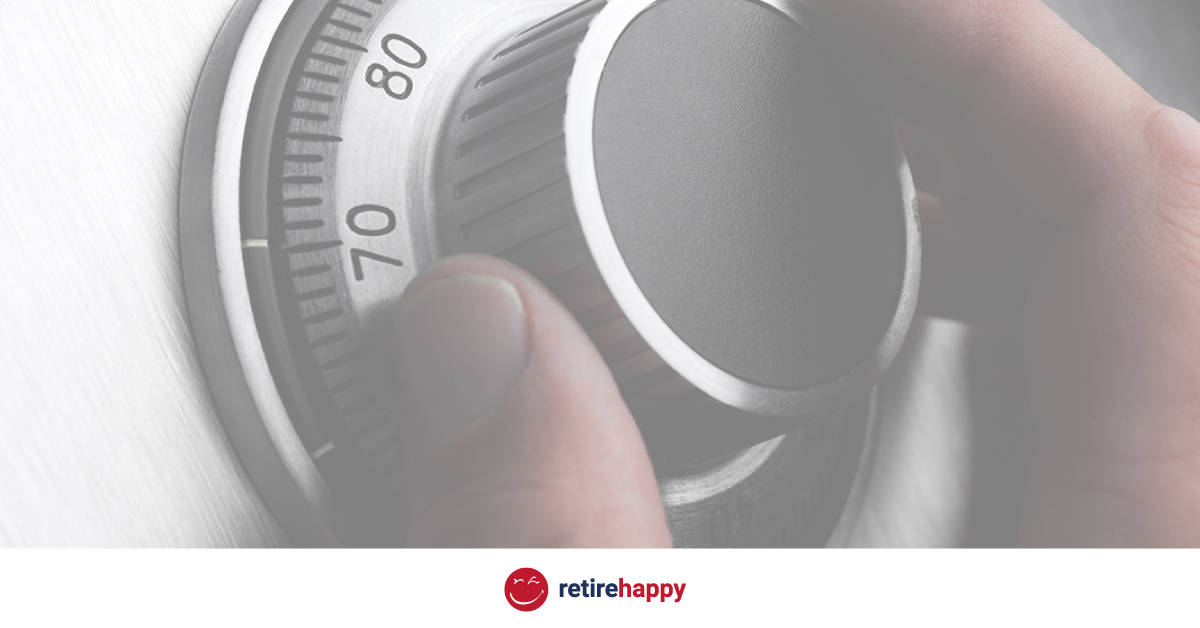Unlocking LIRAs: How to get money out of your pension

If you left a company with a pension before retirement, chances are you had to move the money into a Locked in Retirement Account (LIRA). That’s because both the federal and provincial governments do not permit you to convert your pension into cash.
LIRAs are designed for accumulation of money that originated from a pension plan. People who leave employers with either Defined Benefit Plans (DB) or Defined Contribution Plans (DC) can move their pension funds into LIRA where they can self manage their asset (with or without the help of a financial advisor).
LIRAs do not allow for lump sum withdrawals and there are no options to create income. If you want income from your LIRA, you will have to either transfer to a Life Income Fund (LIF) or a Life Annuity. Typically the need for income from happens when your retire.
How can you get money out of a LIRA?
This is one of the most common questions I get. So many people, especially in tough times are trying to access these funds for use.
Back in 2008, Finance Minister Jim Flaherty introduced changes to allow Canadians easier access to their Locked-in retirement accounts (LIRA). Prior to 2008, it was very difficult for Canadians to access their own pension money because the rules were designed with the intent of trying to ensure lifetime income. As a result, there were restrictions in place preventing people from spending their pension funds too quickly.
Generally speaking the only way to get money out of your locked in accounts is to retire. In most cases, the earliest age you can access pension money is age 55 (Some situations allow for access to funds before the age of 55 – see below).
When you need income, you have two or three options depending on the province you live in. You can Transfer to Life Income Fund (LIF), a Life Annuity and where applicable a Life Retirement Income Fund (LRIF).
Exceptions to allow you to unlock your pension money
You cannot access pension funds prior to 55 years of age except for a few exceptions:
Different provinces mean different rules
Pension rules can be pretty complicated and confusing because every province has it’s own set of laws. Here are some resources for the different rules for difference provinces:
- Federal – Federal Pensions (includes Yukon, NWT and Inuvik)
- BC – British Columbia Financial Institutions Commission (FIC)
- Alberta – Alberta Finance Unlocking rules
- Saskatchewan – Saskatchewan Unlocking rules
- Manitoba – Manitoba Finance Unlocking rules
- Ontario – Financial Services Commission of Ontario Unlocking
- Quebec – Refunding LIRAs and LIFs in Quebec
- Nova Scotia – Nova Scotia exceptions to locked-in pensions
Access to small amounts
Amounts held in a locked-in contract are considered to be too small to provide a useful pension if the dollar value of that account falls below a set level. In most cases, that level is 20% of the Yearly Maximum Pensionable Earnings – YMPE. For the year 2024, the YMPE is $68,500. This means that any LIRAs with less than $13,700 can be unlocked. Again, there can be some slight variations depending on the pension rules for different provinces.
- For example, if you are over the age of 65, some provinces allow pensions less than 40% of the YMPE ($27,400) to be unlocked.
- For individuals 55 or older with total holdings in federally regulated locked-in funds, up to 50% of YMPE ($34,250) will be able to wind up their accounts or convert to a tax-deferred savings vehicle with no maximum withdrawal limit, such as a Registered Retirement Income Fund or a Registered Retirement Savings Plan (RRSP).
- The threshold for small holdings will increase with the average industrial wage.
- Be sure to check the rules for each province to understand the details of how a small pension is defined.
| Year | YMPE |
|---|---|
| 2024 | $68,500 |
| 2023 | $66,600 |
| 2022 | $64,900 |
| 2021 | $61,600 |
| 2020 | $58,700 |
| 2019 | $57,400 |
| 2018 | $55,900 |
| 2017 | $55,300 |
| 2016 | $54,900 |
| 2015 | $53,600 |
| 2014 | $52,500 |
| 2013 | $51,100 |
| 2012 | $50,100 |
| 2011 | $48,300 |
| 2010 | $47,200 |
| 2009 | $46,300 |
Shortened life expectancy
If you have a terminal illness or a disability that is expected, in the opinion of your doctor, to shorten your life considerably, then your LIRA or LIF may be unlocked. Your doctor must provide the shortened life opinion in writing. Also, you may not withdraw the funds unless your pension partner consents to giving up his or her entitlement to a joint and survivor pension. Most pension jurisdiction will require a doctors note or some medical evidence as well as a spouses consent to unlock the pension funds for shortened life expectancy. Ontario goes one step further and defines a shortened life expectancy as your life expectancy is two years or less.
Becoming non-resident of Canada
If the Canada Revenue Agency (CRA) determines that you are a non-resident of Canada for tax purposes, and confirms this in writing, then you may unlock your LIRA or LIF. Once unlocked, the funds may be transferred into a regular bank account or transferred into an investment account that is not subject to the Act. You do not have to wait until age 55 to access those funds, nor do the funds have to be paid out in a set manner. Taxation still applies on withdrawal. Most pension jurisdictions will require some proof of non-residency like confirmation from Canada Revenue Agency (CRA) and some time requirement like 2 years of non-residency before unlocking the pension is allowed.
Financial hardship
If you are facing a situation of financial hardship, you may apply to release of some or all of the funds in your LIRA or LIF. Each pension jurisdiction can have different requirement for what financial hardship means:
- Federally, no permitted withdrawals are allowed under financial hardship when expected income is 75% of the YMPE (i.e. $51,375 for 2024) or higher. Those with high medical or disability-related Costs can also apply for unlocking under the financial hardship rules: The amount of medical expenditures up to a maximum of 50% of the YMPE provided that medical expenditures exceed 20% of expected annual income.
- Ontario, for example, has 4 categories of financial hardship while Alberta and BC have 5 categories.
- Manitoba does not recognize financial hardship as a reason to unlock pensions.
50% Unlocking
The 50% unlocking does not apply in all jurisdictions. If you live in Alberta or you have a Federally regulated locked in account, you may qualify to unlock up to 50% of your holdings and transfer them to an RRSP where there is no restrictions on withdrawal. This can only occur at the time when you are moving money from a LIRA to a LIF or Annuity.
For pensions in Ontario, you can transfer out 50% of pension funds that are in a Schedule 1.1 Life Income Fund into a RRSP or RRIF.
In Saskatchewan, effectively, 100% of the pension can be unlocked since the entire LIRA can be moved to a RRIF with spousal consent. Once the money is in the RRIF, pension restrictions no longer apply.
Summary
As you can see, Pension legislation can be pretty confusing because the rules are not uniform across the country. the rules apply based on the origin of the pension plan and not necessarily where the individual lives or where the funds reside. If in doubt, seek help from a qualified professional.
Other related articles
Unlocking Pension Funds due to Financial Hardship Rules
Learning about Locked in Retirement Accounts
Federal rules for unlocking (OFSI)
Rules for unlocking pension funds (Alberta rules)
